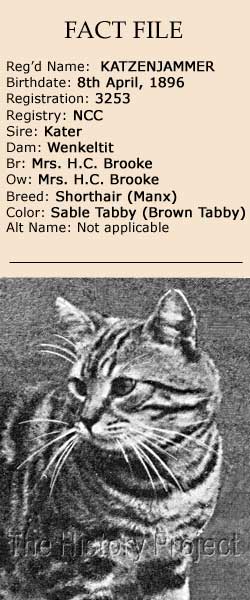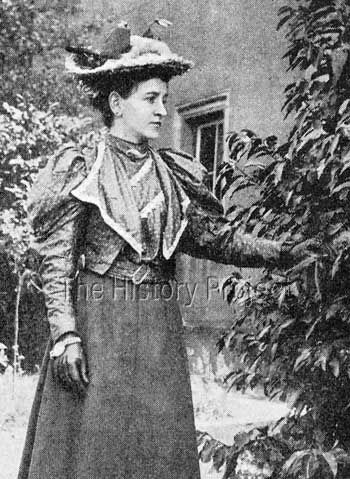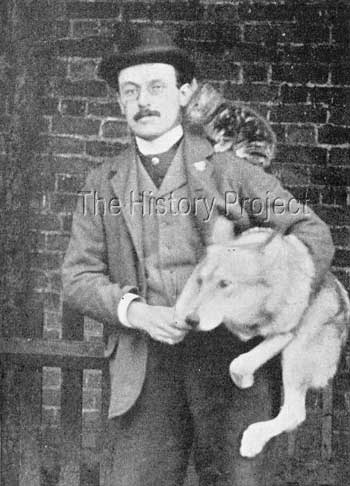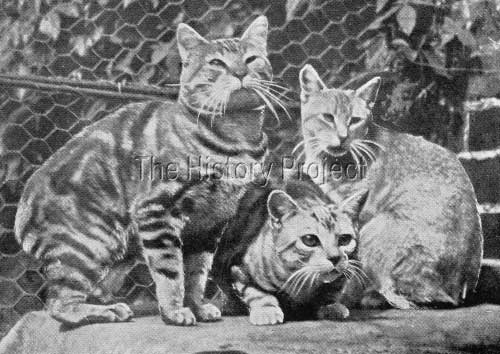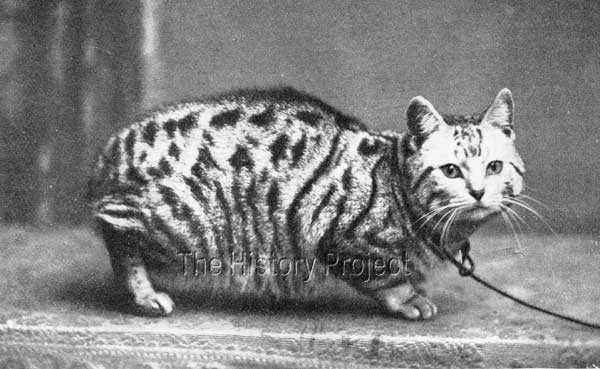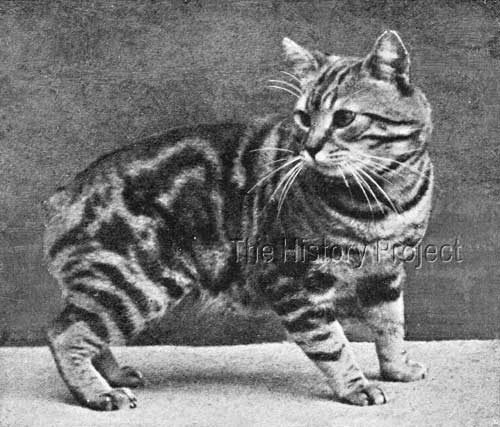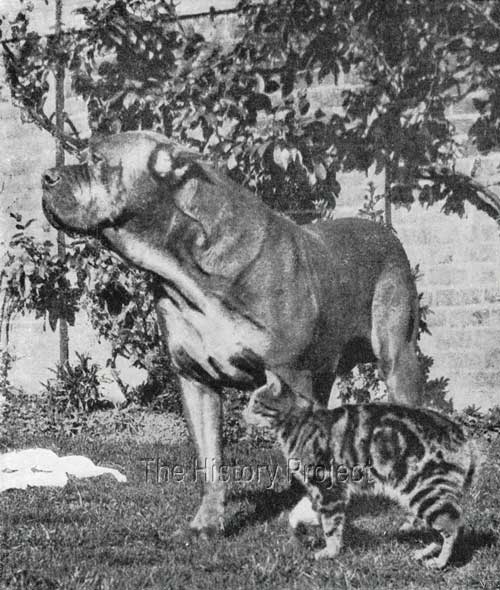 | ||||||||||||||||||









|
KATZENJAMMER (1896)PHOTOS | SOCIAL MEDIA | REFERENCES
HISTORICAL BACKGROUND:Among the earliest breeders and fanciers of Manx were the brothers, E. Sydney Woodiwiss and Sam Woodiwiss. Both were active participants of The National Cat Club and in fact we find them both listed as serving on the Committee of that body for 1894 and 1895. Both were also avid supporters of a variety of different shorthaired breeds, Sam registering his under the well-known 'Sedgemere' prefix, taken from where he lived at Sedgemere, East Finchley. We find a large selection of shorthairs in the register bred and owned by Sam, including some unusual ones, all under the 'Sedgemere' cattery name, including English Shorthairs, Manx, Siamese and even an imported 'Indian Fishing Cat' with the unusual name of 'Sedgemere Hateful', (NCC: 1801), possibly garnered through a friendship with Mr. Gambier Bolton, a seasoned cat fancier and naturalist who was famous for his travels and his association with big game cats! His brother, Mr. E. Sydney Woodiwiss, who lived at Upminster in Essex, bred and owned English Shorthairs and Manx cats, choosing to register his English shorthairs under the 'Upminster' prefix, while his Manx cats were simply registered under the cattery name 'Manx'. We find a plentiful number of his early Manx in the register, one of the earliest being 'Manx Pickles' born in 1893, and although not recorded in a register, he seems likely to have been the breeder of the lovely silver tabby 'Manx Silverwing', owned by Mr. Gambier Bolton, and the dam of a Manx named 'Ping Pong'. His 'Manx Tommy' (NCC: 2281) was a Black Manx imported directly from the Isle of Man. Interestingly, a Mr. George Woodiwiss Esq, is recorded in the register as the previous owner of a Blue Shorthair, named 'Peter of Kingswood' (NCC: 1316) born in 1890, and is also to be found listed as an Honorary Member of The National Cat Club in 1895, alongside such notables as Madame Ronner and The Duchess of Bedford. Another Manx breeder of note from this period is Mr. Jungbluth, who bred both 'Kater' and later 'Bonhaki', who were respectively purchased by Mr. and Mrs. H.C. Brooke and who became the backbone of their Manx breeding program. The Brooke's had a wide reputation as fanciers and connoisseurs of 'curious pets', accommodating in their menagerie, dogs, cats, rats, poultry, a dingo, and tame wolves! It was into this world of the late Victorian cat fancy, and into this unusual menagerie that 'Katzenjammer' made his appearance. PARENTAGE & OWNERSHIP:
Unknown
Kater
| Unknown
Katzenjammer, Apr-8-1896, Brown Tabby, M
| Unknown
Wenkeltit
Unknown
'Katzenjammer' was born on 8th April, 1896. As a home-bred cat, he was most likely born at Welling, where the Brooke's had their homestead. His sire was the Manx cat 'Kater' (NCC: 3252), born June, 1894, whom the Brooke's had purchased from Mr. Jungbluth. His dam was 'Wenkeltit', for whom no other information is available. On his registration, he is noted as bred and owned by Mrs. H.C. Brooke. Charles Lane, in his book Dog Shows and Doggy-People (1902) gives us this image of Mrs. Brooke below and tells us the following about Mr. & Mrs. Brooke, and of Mrs. Brooke's particular interests:
"The subjects of this sketch are another instance of husband and wife with congenial tastes, and both keenly interested in livestock, and, strange to say, both seem to like the varieties which are rather out of the common. "Mrs. Brooke is quite an enthusiast, not only with dogs, but also with cats and poultry - in fact, I think anything she takes up, she does with all her might; and the number of prizes, with one variety and another, she has taken since she lived in this country - I believe both she and her husband were educated, and spent most of their youth on the Continent - must be considerable."3 He also provides an insight into both the interests and talents of Mr. H.C. Brooke: "Mr. Brooke has been known as one of the most ardent supporters of the Dogue De Bordeaux, of which he had some of the finest specimens seen in this country - 'Sans Peur', 'Dragonne', 'Matador du Midi' were amongst his best. He also had some good Esquimax, Hairless Dogs, Dingoes, Thibet Dogs, and other distinguished foreigners, and has several wolves, which he has succeeded in taming, and has a better opinion of wolves in general than is held by the public at large. "He also takes an interest in Bull-dogs, usually keeping some - 'Aston Thornfield', 'Battle-axe', and 'Baby Bacchus' have been some of his winners - and has been the Hon. Secretary of one of the Bull-dog Clubs for some time. "From the fact of my being sometimes called upon to judge what my friend Mr. Brough calls the 'wild beasts' - that is, the Foreign Dog Classes - I have often had the pleasure of seeing the dogs from this kennel in the show rings, and can testify to the ability with which Mr. and Mrs. Brooke handle breeds which are not 'everybody's money,' and the zeal and energy exerted to show them to the best advantage."3
We learn even more about Mr. and Mrs. Brooke's background from an interview with 'Windsor Magazine' dated in 1900, in which Mr. Brooke enlightens us as to early education and development as a young man on the Continent: "I went from King's College School to a school at Sutton-Valence. Here I first imbibed the joys of hunting and ferreting; and I may say that even now, after all my varied experiences of pastimes at home and abroad, ferreting is still one of my favourite amusements. I next went to college in Germany, where I very soon joined one of the 'corps' which exist at most of the higher German educational institutions for convivial and duelling purposes. Since then I have been, and still am, a great believer in the duel. The majority of these college duels are of a comparatively light character, such as the 'Schlager', which is extremely prevalent amongst students; but even this may sometimes result in serious injuries. "From my schoolboy days I have always had a number of pets, and when I went to Berlin to study at the Veterinary College, I had a large artificial run, near the town, for training dachshunds to fox and badger. I also had foxes, jackals, polecats, martens, a hybrid between dog and wolf, a toy Pomeranian, long-haired dachshunds, a bloodhound, and a fighting boarhound related to 'Harras II'." From the above, we learn that Mr. Brooke was in all probability a Veterinarian, and no doubt this made him an ideal candidate for being the breeder of such curious pets and accounts for his specialist knowledge of so many unusual varieties. His German education may also explain some of the names of Mrs. Brooke's Manx cats! While many of us may have known that the translation of 'Katzen' is 'cats', the literal translation of both the names 'Kater' and 'Katzenjammer' is 'hangover'! Perhaps in their youth Mr. & Mrs. Brooke liked to imbibe! Of course, the Brooke's choice of cat breeds very much reflected their interest in dogs, therefore cats of unusual conformity or 'foreign' cats were their specialty, and they were known to be constantly on the lookout for the rare and 'specifically different'. The Manx was their favourite from the local isles, but Mr. Brooke was also an ardent supporter of the Abyssinian, especially the 'Ruddy', and he is known to have imported both 'Indian' and 'Australian' cats. It was his specialist knowledge of foreign varieties that made him the obvious choice to write the chapter on the foreign varieties of cats in Frances Simpson's The Book of The Cat (1903) and it is of particular interest to note, that it was he who wrote to Mr. Shinick in New Mexico, with regard to his Mexican Hairless cats. Mrs. Brookes exhibited two of the most outstanding 'Mexican Crested' or 'Hairless' dogs of the time, father and son, being 'Hairy King' and 'Paderewski Jnr'.
We get a specific glimpse of the personality of 'Katzenjammer' from an anecdote provided by Mr. Brooke: "It is also noticeable that many Manx, like the Siamese, are very dog-like in their habits, showing extreme affection for their owners. Poor old 'Katzenjammer,' for instance, would follow me to the railway station, and many a time on my return from town have I found him sitting in the middle of a field waiting for me, and on seeing me he would accompany me home just like a dog."1 And similarly of the affection of the owner for his cat: "Champion and Premier 'Katzenjammer' was bred at home; he did not commence his show career till late, and then he had to meet 'Bonhaki,' after whose death, however, he was unbeaten, and had earned his champion title at the time of his death from gastritis last year, which robbed me of one of the most affectionate 'pals' man ever had, and I am not ashamed to own that many and bitter were the tears I shed over his grave."1 SIBLINGS & SHOWS:At least some of the Show awards of 'Katzenjammer' are listed in Register of The National Cat Club. But an interesting tid-bit about an early appearance at the Crystal Palace as a kitten is provided by none other than Miss Elsie Hydon, who later became President of The Cat Fanciers' Association and was the owner-manager of the famous 'Lavender' cattery, based in Bogota, New Jersey. "I remember H.C. Brooke by name, since the time Lady Decies used to show Zaida and Miss Whitney used to show her wonderful brownies. Yes! We first showed cats at The Crystal Palace in 1895 [sic], to wit, the infant, who later became Champion and Premier Katzenjammer, and his sire Kater."8 The above was quoted from a newsy piece published in the 14th September, 1927 issue of Cat Gossip, so we may forgive Miss Hydon for mistaking the year, which must have been 1896, given that Katzenjammer was not born until April 1896 and would have been only six months old at the Crystal Palace Show of that year. It is illuminating however, to gain confirmation that the sire of 'Katzenjammer' was shown at the same time. 'Kater' and son, alongside each other would have been quite a sight!
His listed wins as an adult are: BREEDING & PROGENY:Of progeny credited to 'Katzenjammer' , there are only five. These are:
PHOTOS:
SOCIAL MEDIA :
In Summary: The world into which 'Katzenjammer' was born was a strange but dynamic one. The curious environment that was the home-life of Mr. and Mrs. Brooke, where a dingo had the freedom of the home and his own dedicated armchair in which he slept at night, much like any regular house dog - and Katzenjammer's exposure to cats and dogs of wide variation, as well as a myriad of other pet species, must have been an exceptionally bizarre upbringing for a young Manx kitten. But that he was a content and happy cat cannot be denied. In the photograph of him with Mr. Brooke's famous Dogues de Bordeaux, he appears quite relaxed and totally at home. That he was a respected example of the breed cannot be challenged, as is witnessed by those who used him at stud, and his only rival for pre-eminence was the Brooke's own 'Champion Bonhaki' while that amazing Manx male yet lived. It is indeed heart-warming to read Mr. Brooke's own tribute to 'Katzenjammer', which is clearly written out of sheer love for his old 'pal'. Many years later, Mr. Brooke would import another Brown Tabby Manx male from the Isle of Man, and in a living tribute to his old favourite, would name him 'Katzenjammer's Ghost'. This lovely male became a celebrated Champion in his own right, and upon the death of Mr. Brooke, became the property of Miss Helen Hill Shaw, as 'Katzenjammer's Ghost of Cademuir'.8 Miss Shaw says of the breed: "As a breed they are all that can be desired; wonderfully intelligent and affectionate to their owners and to each other; living the ideal family life, they are the best of pals. We have always been able to let our Manx males run about the house without any fear of unpleasantness."6 We are reminded of Mr. Brooke's anecdote of meeting 'Katzenjammer' on his way home from the railway station, and knowing that during his lifetime, this wonderful Manx cat enjoyed exceptional freedoms, mixed company, and a healthy dollop of family love. REFERENCES:
Registers associated with this article include The Incorporated Cat Fanciers Association of Great Britain (TICFAGB), National Cat Club (NCC), The Cat Club (CCR), Beresford Cat Club (BCC), Feline Federation Francaise (FFF), Siamese Cat Registry (SCR), US Register & Studbook for Cats (USR)including Supplement(USRS), The Studbook of the American Cat Association (ACA), and the Studbook & Register of the Cat Fanciers' Association (CFA).
|
|||||||||||||||||
Home | Cats | Gallery | Clubs | People | Artifacts | Articles | Updates | Contact Us ©The CFA Foundation, Inc and The Harrison Weir Collection
|
||||||||||||||||||
